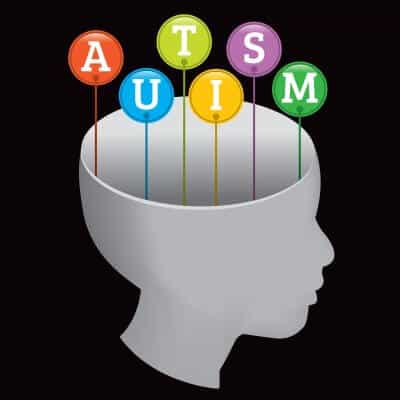An updated screening tool that physicians administer to parents to help determine if a very young child has autism has been shown to be much more accurate than earlier versions at identifying children who could benefit from further evaluation, according to researchers supported by the National Institutes of Health.
The Modified Checklist for Autism in Toddlers — Revised, with Follow-Up (M-CHAT–R/F) — is a free, two-step screening tool used to detect children likely to have autism. It is intended for use at regular well-child checkups for children 16 to 30 months old. With the M-CHAT-R/F, health care providers can classify a child’s risk of having autism as low, medium or high, on the basis of parents’ answers to 20 questions.
“This checklist can more accurately identify children likely to have autism so they can get the treatment and support they need,” said Alice Kau, Ph.D., of the Eunice Kennedy Shriver National Institute of Child Health and Human Development (NICHD), the NIH institute that funded the study. “Given that the typical autism diagnosis occurs at age 4, it also offers the possibility of detecting autism much earlier — during regular doctor’s visits when a child is 18 months or 2 years old. And earlier intervention has been shown to improve outcomes for children with autism.”
A score in the high-risk range warrants a referral for further evaluation for possible autism. For a child determined to be at medium risk, M-CHAT R/F includes a follow-up questionnaire used soon after the original evaluation to obtain additional information needed to more definitively classify the child as either high risk or low risk.
Based on the M-CHAT-R/F classifications, the researchers found that a smaller proportion of children received a medium- or high-risk assessment (7 percent) than with earlier versions of the checklist (9 percent). However, more total cases of autism were detected with the revised checklist than with earlier versions (67 cases per 10,000 screened vs 45 cases per 10,000 screened).
Of the more than 16,000 children evaluated with the screening tool, 93 percent of the children screened were considered low-risk, 6 percent were in the medium-risk range and 1 percent were considered high-risk.
Of all the children who determined by the test to be at risk after the M-CHAT-R/F follow-up, 95 percent were eventually found to have some form of developmental delay, including more than 47 percent with autism spectrum disorder.
First author Diana L. Robins, Ph.D., of Georgia State University (GSU), in Atlanta, conducted the research with GSU colleague Karís Casagrande, and Marianne Barton, Ph.D., Chi-Ming Chen, Ph.D., Thyde Dumont-Mathieu, M.D., M.P.H., and Deborah Fein, Ph.D., all of the University of Connecticut in Storrs. Dr. Fein was the study’s senior author.
The findings appear in Pediatrics.
The researchers updated an earlier version of the autism screening tool, adding examples, rephrasing some questions and dropping others that previously did not elicit strong responses. Using the revised tool, the researchers worked with health care providers to screen more than 15,000 toddlers considered at low risk for autism.
“Earlier tools cast a wider net, but these refinements will allow health care providers to focus energy where it is needed most and will reduce the number of families who go through additional testing but which ultimately do not need treatment interventions,” said Dr. Fein.
 The free autism screening tool
The free autism screening tool ![]() is available online in more than 45 languages.
is available online in more than 45 languages.
This study was supported by NIH grant number R01HD039961.
About the Eunice Kennedy Shriver National Institute of Child Health and Human Development (NICHD): The NICHD sponsors research on development, before and after birth; maternal, child, and family health; reproductive biology and population issues; and medical rehabilitation. For more information, visit the Institute’s website athttp://www.nichd.nih.gov/.
About the National Institutes of Health (NIH): NIH, the nation’s medical research agency, includes 27 Institutes and Centers and is a component of the U.S. Department of Health and Human Services. NIH is the primary federal agency conducting and supporting basic, clinical, and translational medical research, and is investigating the causes, treatments, and cures for both common and rare diseases. For more information about NIH and its programs, visit www.nih.gov.



